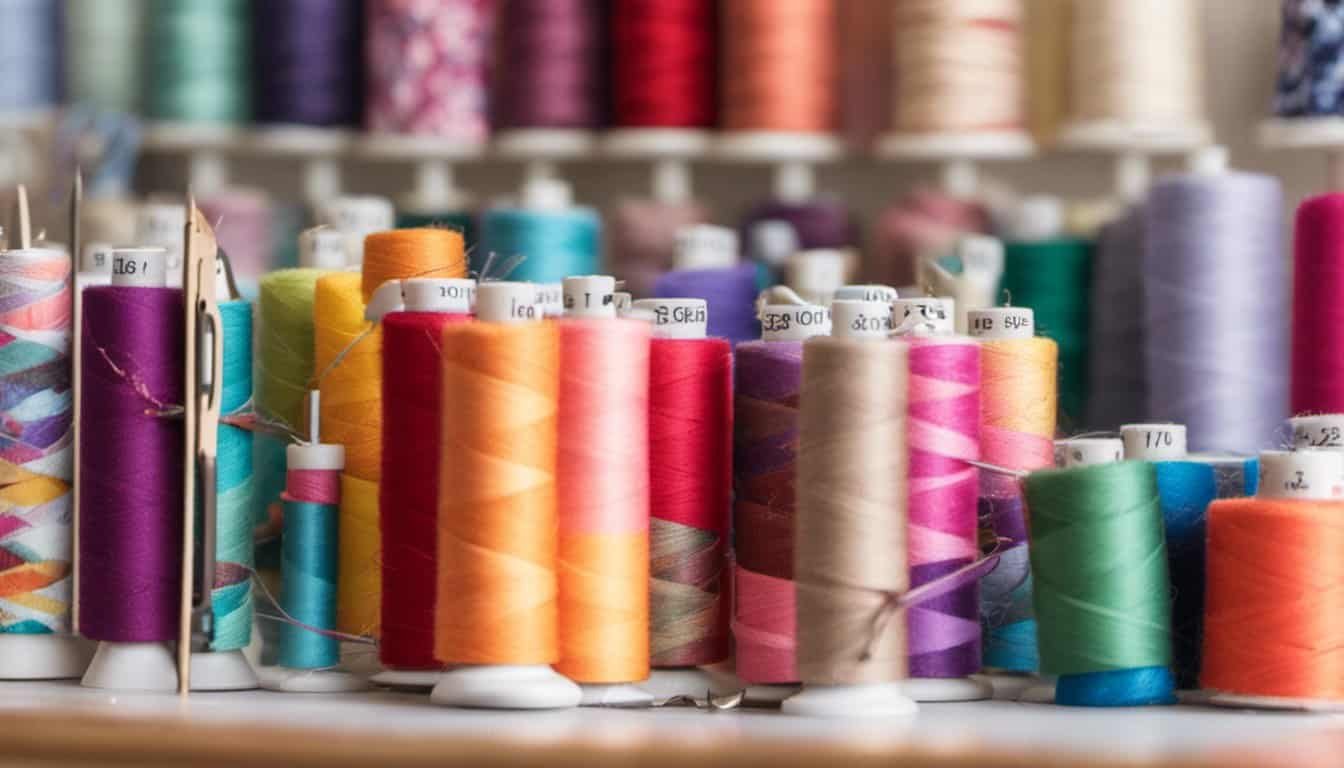Sewing with terry cloth can feel like a cozy adventure, especially when you’re creating your own towels. This fabric, known for its soft texture and absorbency, is perfect for everything from bath towels to washcloths. I love the idea of turning a simple piece of terry cloth into something functional and beautiful for my home.
Understanding Terry Cloth
Terry cloth is a versatile fabric known for its unique texture and practical applications. It’s widely used for making towels due to its softness and high absorbency.
What Is Terry Cloth?
Terry cloth is a type of woven fabric that features loops on both sides, creating a plush and absorbent material. It’s primarily made from cotton, though blends with polyester or rayon also exist. This fabric effectively traps moisture, making it suitable for bath linens and beach towels.
Characteristics of Terry Cloth
- Absorbent: Terry cloth excels in moisture absorption, holding several times its weight in water, perfect for towels.
- Soft: The looped texture ensures a soft touch against the skin, enhancing the comfort of towels and washcloths.
- Durable: Terry cloth withstands multiple washes and maintains its quality, making it ideal for everyday use.
- Versatile: Suitable for various projects, including bathrobes, spa items, and baby bibs.
- Easy to Sew: Terry cloth works well with standard sewing machines, and the forgiving nature simplifies the sewing process.
Preparing to Sew
Preparation is key to a successful sewing project with terry cloth. Taking the time to choose the right fabric and gather essential tools can make a significant difference in the outcome.
Selecting the Right Terry Cloth
Selecting terry cloth involves considering specific features. I prefer cotton terry cloth for its absorbency and softness. Look for a weight of at least 300 grams per square meter for bath towels, as it promotes durability and longevity. Choose a fabric with a looped texture for maximum absorbency, ensuring a comfortable feel against the skin. Color options are abundant, so consider coordinating shades or patterns that fit your style. Lastly, examining the fabric for consistency in loop height and density is essential, as this affects the final product’s quality.
Tools and Materials Needed
Gathering the right tools and materials streamlines the sewing process. Here’s a list of what you’ll need:
- Sewing Machine: A standard machine works well for terry cloth.
- Walking Foot: Use this attachment to manage the thickness and prevent slipping.
- Scissors or Rotary Cutter: Ensure you have sharp cutting tools for clean edges.
- Pins or Clips: Opt for clips, as they hold fabric securely without damaging loops.
- Thread: Choose polyester or cotton thread in a color that matches the fabric.
- Fabric Marker or Chalk: For marking measurements and guidelines.
- Measuring Tape: A flexible tape helps with accurate cutting and sizing.
- Iron: Use the steam setting cautiously; avoid direct heat to prevent damaging loops.
Having these items on hand before starting the project makes the process smoother and more enjoyable.
Sewing Techniques
Sewing with terry cloth involves specific techniques that ensure a professional finish and durability. I’ll share basic stitches suitable for terry cloth, as well as tips for handling this stretchy fabric.
Basic Stitches for Terry Cloth
- Straight Stitch: Use a straight stitch for seams. It’s reliable and provides strong seams, which is essential for items like towels.
- Zigzag Stitch: A zigzag stitch prevents fraying on the edges. It works well for hems and adds a finished look to the raw edges of terry cloth projects.
- Overlock Stitch: An overlock machine excels with terry cloth, allowing for an efficient way to finish edges that might otherwise unravel.
- Topstitch: Topstitching adds reinforcement at seams. This stitch is decorative and functional, offering extra durability in areas subject to wear.
Tips for Handling Stretchy Fabric
- Use a Walking Foot: A walking foot helps manage the layers of terry cloth, preventing them from shifting during sewing.
- Pin or Clip: Use clips rather than pins when working with terry cloth. Clips hold the fabric securely without leaving holes.
- Gentle Pressure: Maintain light pressure as you guide the fabric through the machine. This approach helps prevent pulling or stretching.
- Choose the Right Needle: A stretch or ballpoint needle suits terry cloth, as it easily glides between the loops without snagging the fibers.
- Test Stitch: Always test your chosen stitch and tension on a scrap piece before starting on your project. This ensures optimal results.
These techniques and tips provide a solid foundation for sewing with terry cloth, enabling me to create high-quality items efficiently.
Creating Your Towels
Creating towels from terry cloth involves careful measuring, cutting, and finishing techniques. The process transforms this versatile fabric into functional home essentials.
Measuring and Cutting Your Fabric
Measuring your terry cloth accurately ensures your towels turn out the right size. I typically use a measuring tape to measure both the width and length of my desired towel size. For standard bath towels, I recommend dimensions of 27 by 54 inches. For hand towels, opt for 16 by 28 inches.
After measuring, I mark the fabric with fabric markers or chalk by using a straight edge for clean lines. I then cut the fabric with sharp rotary cutters or fabric scissors. It’s crucial to cut straight lines to maintain consistency and symmetry in the final product.
Hemming and Finishing Edges
Hemming gives your towels a polished look while preventing fraying. I begin by folding the edges in about ½ inch and pressing them with an iron for a crisp finish. A zigzag stitch works well at the hem to secure the edges and add elasticity.
After the first hem, I fold it again about ¼ inch and press once more. This double fold hides raw edges and ensures durability. I use a straight stitch along the hem line to finish it off neatly. For added finishing touches, consider using decorative stitches along the edges or adding a contrasting fabric for a unique flair.

Caring for Your Finished Towels
Caring for your finished towels ensures they stay soft, absorbent, and looking great for a long time. Proper washing and drying techniques, along with routine maintenance, protect your investment in quality terry cloth products.
Washing and Drying Tips
- Use cold or warm water for washing. Hot water can damage the fabric and fade colors.
- Utilize a mild detergent to prevent harsh chemicals from breaking down the fibers.
- Avoid fabric softeners. They create a build-up that reduces absorbency.
- Wash towels separately from lint-producing fabrics, like cottons and fleece. This prevents lint contamination.
- Dry towels on a low or medium heat setting. High heat can shrink the fabric and lead to wear.
- Remove towels from the dryer while slightly damp to minimize wrinkles; hang them to finish drying.
Maintaining the Quality of Terry Cloth
- Store towels in a cool, dry place. Excess moisture can lead to mildew.
- Fold towels neatly to avoid creases; avoid overcrowding in closets to maintain shape.
- Regularly check for any loose threads or fraying edges. Trim as needed to keep a polished look.
- Rewash towels if they become musty or lose absorbency. This helps restore freshness and function.
- Iron towels if necessary, using a low-temperature setting with steam. Avoid direct heat on loops to maintain texture.
Conclusion
Sewing with terry cloth has truly been a rewarding experience for me. There’s something special about turning a simple piece of fabric into a cozy towel that’s both functional and beautiful. I love how the soft texture and absorbency make my creations stand out in my home.
By following the tips and techniques I’ve shared, I hope you feel inspired to dive into your own terry cloth projects. Whether it’s a bath towel or a cute washcloth, the possibilities are endless. Remember to enjoy the process and let your creativity shine. Happy sewing!

















